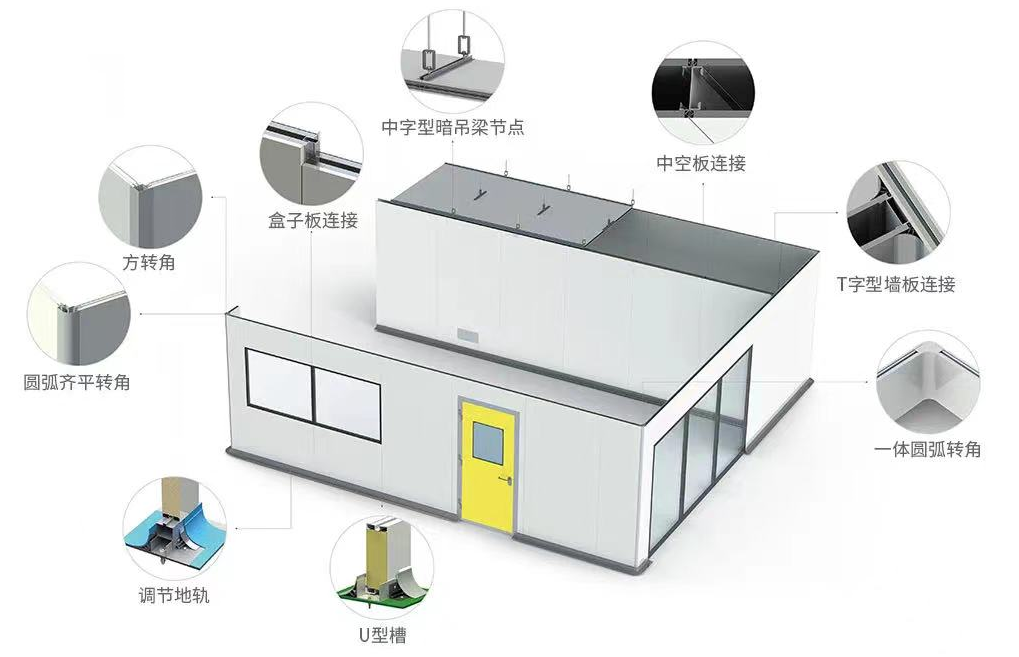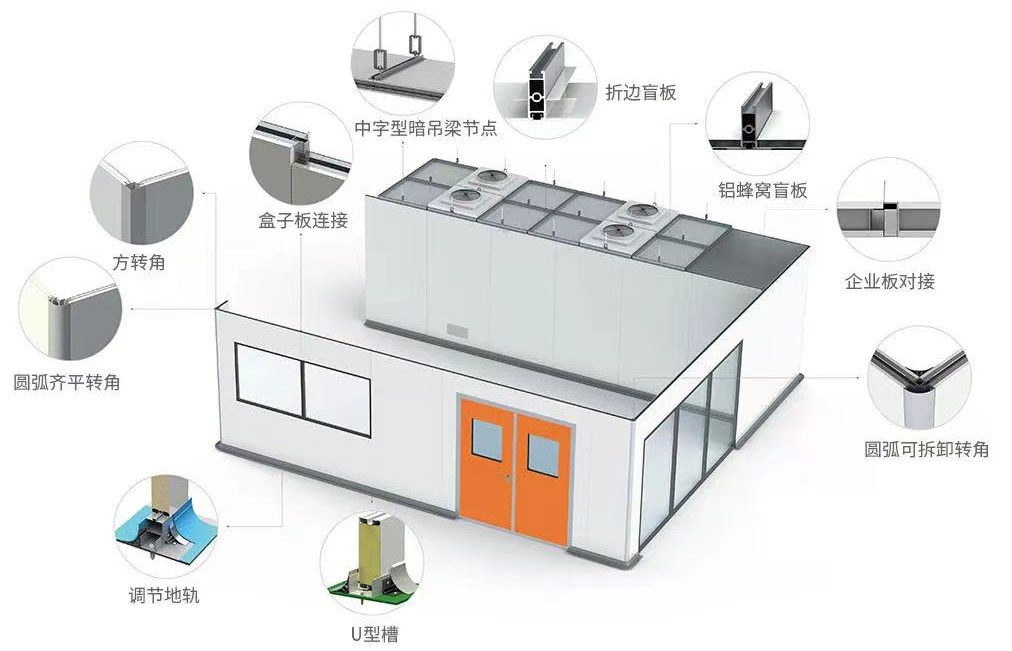Definition of a clean room
Clean room refers to an environment with a low level of pollution. The sources of pollution here are dust, airborne microorganisms, suspended particles and chemically volatile gases. The existence of clean room is to remove fine dust particles and other pollutants in the air within the space, so as to obtain a relatively clean environment. The pollution level of a cleanroom is controlled and can be determined by the number of particles per cubic meter or by the maximum particle size.
Classification of clean rooms
Clean rooms are divided into biological clean rooms and industrial clean rooms.
Biological clean room enclosure system mainly controls airborne microbial (bacteria to microorganisms) contamination. It is divided into biological clean room and biological safety clean room. Biological clean room is suitable for pharmaceutical industry, operating room, sterile ward, animal laboratory, physical and chemical examiners and blood stations, etc. Biological safety clean room must maintain negative pressure, suitable for infectious pathogen laboratory, gene and vaccine and other bioengineering fields.

Industrial clean room enclosure system mainly controls the pollution of air dust particles to the working object, also known as dust-free room or dust-free workshop. Industrial clean room is suitable for electronics (semiconductor, integrated circuit, etc.), aerospace, fine machinery, precision instruments, high purity chemistry, atomic energy, optical and magnetic products, liquid crystal glass and other industries.

Conclusion
The development of clean room is closely related to modern industry and cutting-edge technology. Clean room technology should be based on customer requirements, to make effective control of particles, harmful air, bacteria and other pollutants, in order to meet the requirements of product processing and experimental research of precision, miniaturization, high purity, high quality and high reliability.
